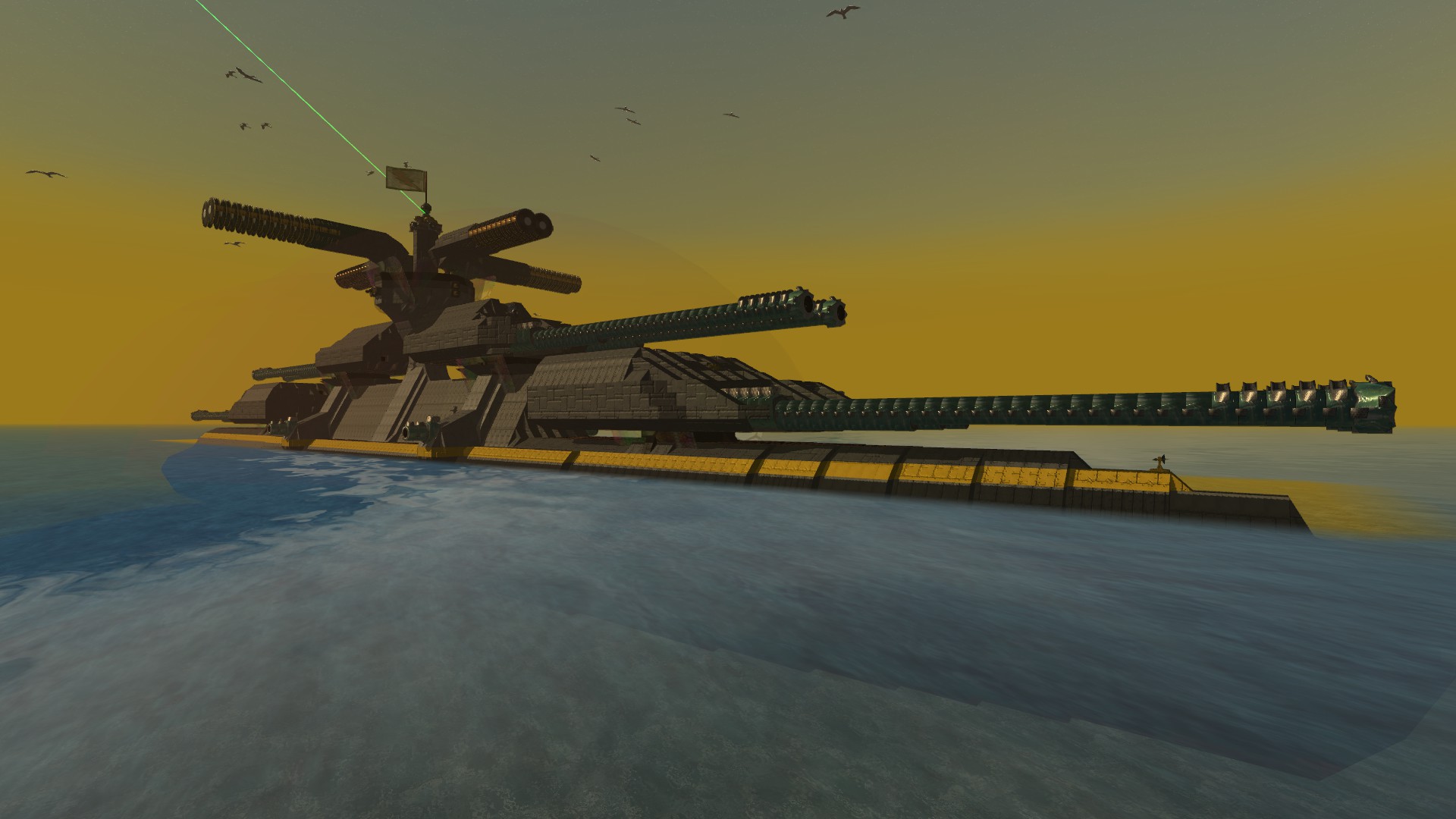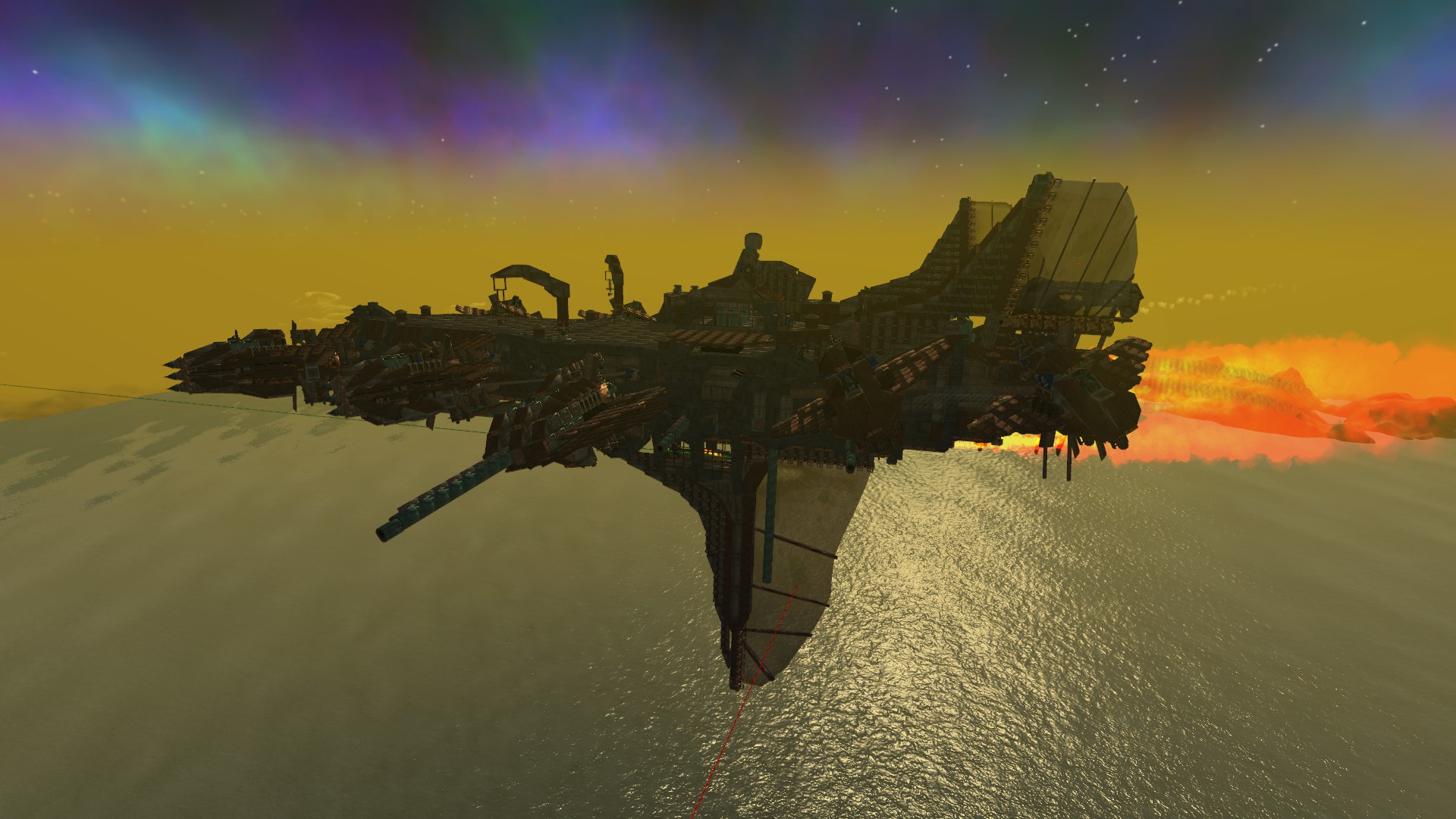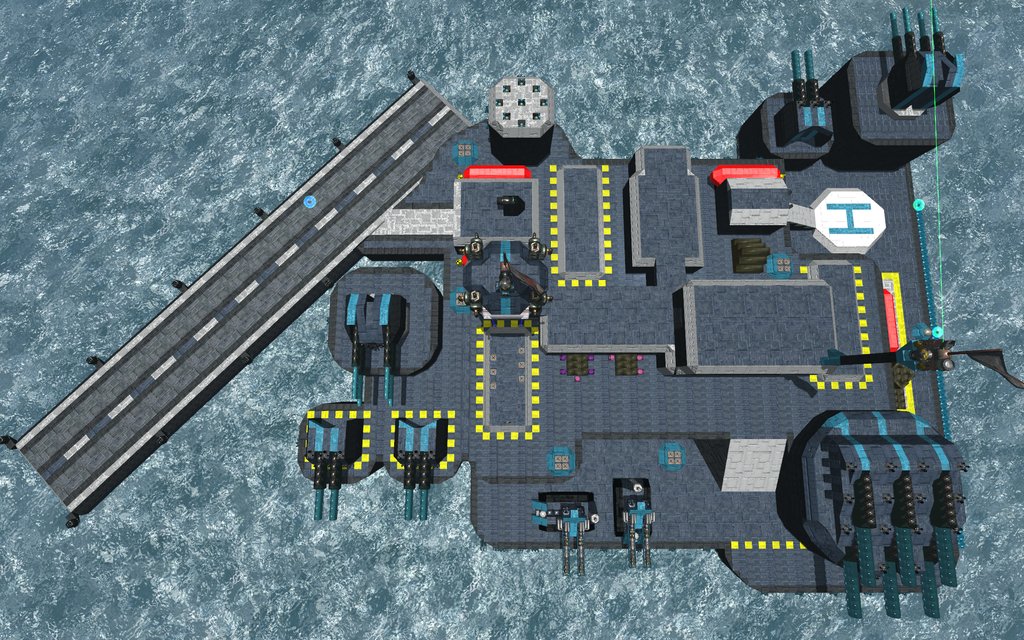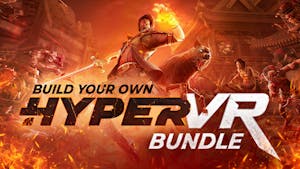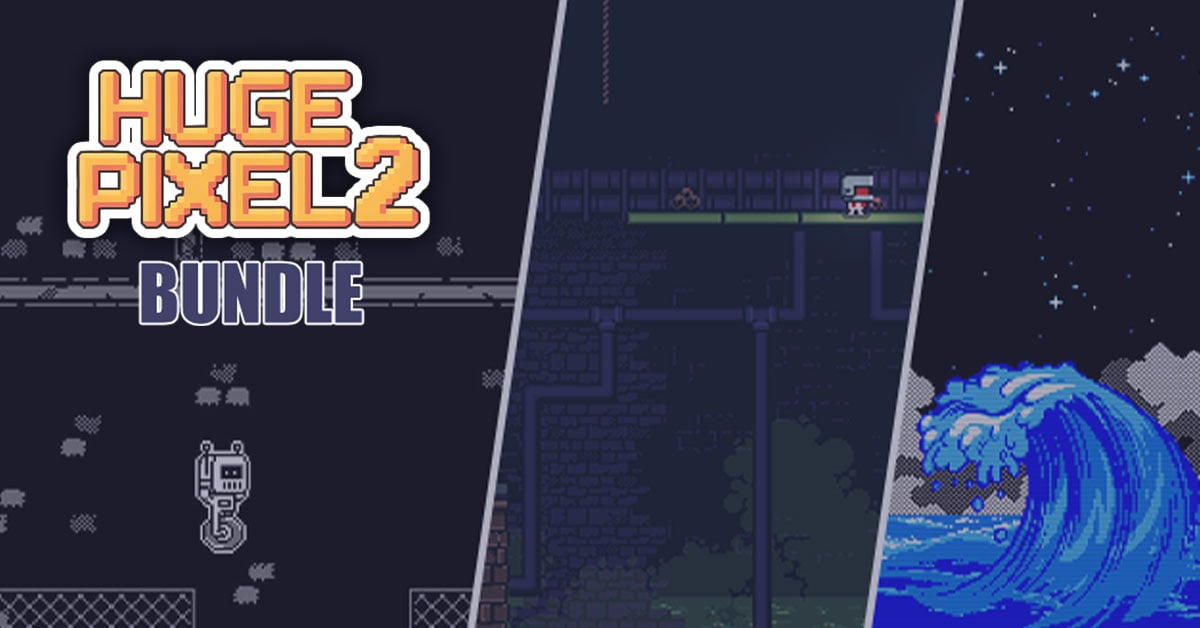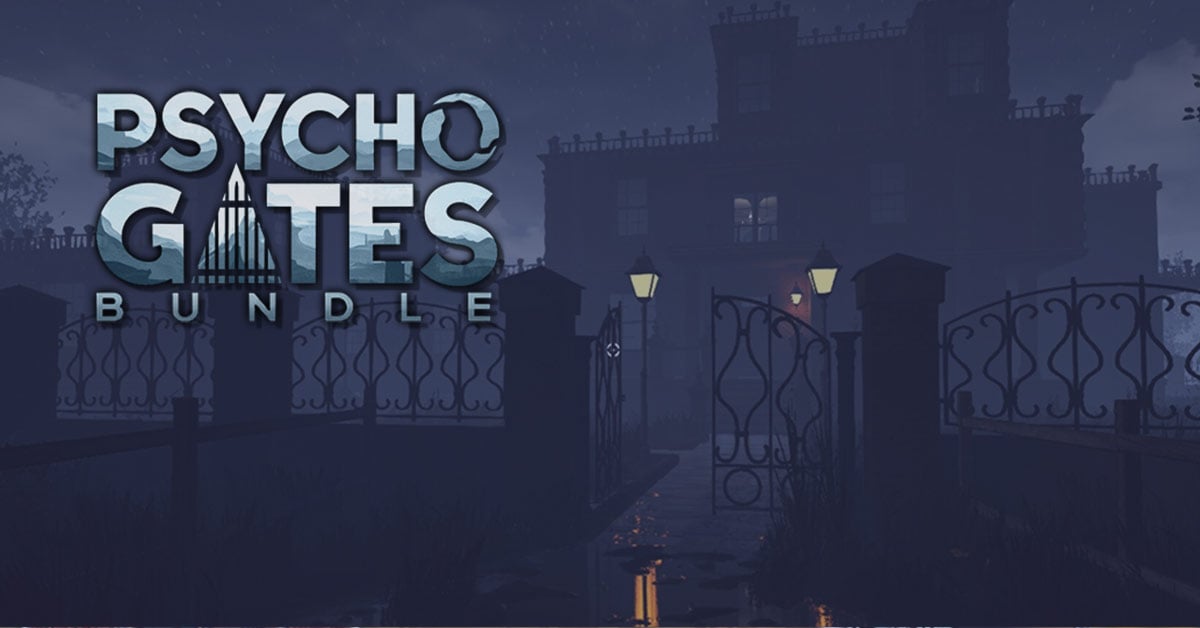Summary
In From the Depths you can build and take first-person command of battleships, planes, submarines, space ships, hot air balloons and more! The game is currently in alpha and contains a wide range of single player content including:- A creative mode allowing you to push your designs to the limit and ensure the total annihilation of your opponents.
- A campaign waged over hundreds of islands against eight unique factions.
- A Story Mode where you can (eventually!) play 15 missions as each of the eight factions - a fantastic mixture of strategy, design and wild battles! Defend your fleet against waves of enemy forces in a series of extremely tough challenges that unlock new components.

Key Features
- Design and build your fleet, fortresses and structures however you want. The alpha currently has over 400 unique components blocks, not including 29 different components for making missiles, torpedoes, depth charges and bombs.
- The sky's the limit, you can equip your vehicle with - cannons, lasers, mines, bombs, missiles, torpedoes, propellers, rudders, jet engines, wings, hydrofoils, hot air balloons, anchors, fire control computers, blueprint spawners, repair bots, air pumps, automated control blocks and many, many more!
- Realistic physics - every block destroyed or added affects the vehicle's functionality, physics and control. Drag, inertia tensors, buoyancy and sealed compartments are all updated based on the design of your vehicle and the damage sustained.
- Be part of a fantastic community (http://www.fromthedepthsgame.com/forum), with new releases made on average once a week. Community organised challenges and blueprint sharing make it an extremely friendly place to hang out!

Customisable Components
The customisable components in From the Depths allow a unique level of engineering customisation:- Design custom missiles, bombs, depth charges and torpedoes by combining various warheads types, fuse types, IR seekers, laser beam riders, laser designators, thrusters, navigation algorithms, fuel pods, sonar seekers, buoyancy compartments and propellers, to deliver a truly bespoke weapon.
- Design custom cannons by combining four different barrel types and lengths with autoloaders, warhead types, ammo boxes and auxiliary components to create everything from AA cannons to howitzers.
- Design custom AI by combing an AI mainframe with 'AI cards' slotted into motherboard blocks. Add radar detection, laser detection and tracking and local weapon controllers to give partial or full control to AI. Create anything from a fully AI controlled aircraft carrier to a battery powered drone.
- Design custom engines using crank shafts, cylinders, carburetors, super chargers, exhausts and fuel injectors. Electric engines, generators and chargers are also available for backup power supplies and drones.
- Similar systems exist for the creation of anti-vehicle and anti-missile lasers, as well as drills that can cut even the largest of battleships in half.

Workshop

What is up Depthians!
We are back with another monstrous update as this one incorporates five beta test builds, so we have a lot to cover.
If you want to dive straight into the massive changelog / dissertation Click
We should probably start with the biggest change to From The Depths in this update and that is the change of fuel and ammo storage.
Quoting Nick, our lead developer
[quote = Nick Lead Developer]
The change is quite simple: "remove ammo and fuel as separate resources. Weapons will consume materials directly, fuel engines and CJEs will burn materials directly".
Before I dig into why I think this is the right thing for FtD, I'd like to explain a few details.
Energy, fuel and ammo are still needed for your constructs.
We have changed the "ammo barrels (etc)" and "fuel tanks" so they are just alternative material storage containers, but with the following properties:
--"ammo barrels" now increase the maximum possible rate of usage of materials as "ammo" for reloading guns. They still explode.
--"fuel tanks" increase the maximum possible rate of use of materials as "fuel" for fuel engines and CJEs, with the future stretch goal of fuel tanks being flammable.
--So ammo racking is going to remain a feature of the game- vehicles that need to reload a large amount of materials may need additional ammo barrels
Ammo and oil processors are replaced ship-wide with existing material storage containers of the same size. They'll be made decorative blocks so you can still use them decoratively in future if you want to.
The oil refinery will be repurposed (described later in the patch notes)
There are two main reasons why I think this is the right move. Why it's right for the business and why it's right for the player.
Let's start with why I think it's right for the player:
Ammo and fuel containers are currently purchasable as either "empty or full". This is confusing when considered in the context of the campaign, story missions, custom battles, multiplayer matches...how do empty and full tanks behave in these modes? I'd need an hour to study the code and a small essay to explain it. That's not good game design.
Localised resources, when considering just the moving of material (and energy, if you want), becomes infinitely more manageable. The supply group system and the transit fleet system are not intuitive and for a lot of situations, their usage becomes fiddly and too complicated. We've replaced these systems with a new supply system that is much more intuitive for moving materials and energy around.
The UI is less cluttered now that ammo and fuel bars are not shown. This is not a minor point...it'll reduce the amount of data on screen by about 40% in a lot of the different views. It'll be so much easier to know at a glance if a particular fleet is running low on "materials" or doing fine. Is a transport ready to leave, or does it need to pick up more materials? Will a set of vehicles have enough materials for the next fight...this is so much easier with just one main resource type per vehicle.
When you or an enemy run out of ammo or fuel in a battle it's just frustrating. By combining fuel, ammo and materials for repairing you can guarantee that if someone runs out, the fight is going to be over quickly.
I imagine that deep down the majority of players would rather not have to create, stock and resupply fuel and ammo. I know that personally, the requirement to do this puts me off playing the campaign. By using a single material it still focuses the game on making efficient war machines, maintaining supply lines and growing your economy, but without the extra confusion of mat->ammo and mat-> fuel conversion.
Being able to assess weapons, engines and vehicles in terms of material cost and running cost is elegant.
Most grand strategy games and RTS games don't have localised resources, and many don't have more than 2 resource types to handle. Very few combine localised materials with multiple types.
Why it's right for the business:
The ammo and oil processors were created about 8 years ago. Boring single blocks that don't add much to the game. It's been our intention to add something similar to the oil refinery but for ammo creation. That's a lot of work and adds to the complexity of the logistical part of the game, which we feel is already a burden.
Making the localised resource supply system more user friendly to make it easy/natural/pleasant to move ammo, fuel and material around the map would require a lot of effort and, quite frankly, I'm not sure we'd ever manage it.
The complexity of the UI scares off a lot of our customers. The barriers to getting a gun firing or a boat moving will be lowered if a single material container can theoretically get everything working.
Running out of ammo/fuel in combat is a problem for our players. We want to find a solution to that, but it would take a lot of effort to do so. We also want the strategic AI to always enter a battle with enough ammo and fuel for the fight- that's another massive bunch of work.
The campaign's strategic AI has to work hard to get materials where it wants them. It's a bundle of work and added complexity to get NPC fleets to restock ammo and fuel as well.
We had proposed work to make resource dumps (from dead ships) contain ammo and fuel...again, that's more work, more bugs, more testing.
Certain game modes such as story missions, tournament mode, and multiplayer maps should theoretically allow the player to choose the amount of ammo or fuel stocked into their vehicles before the match begins. That's another bundle of work and added complexity we'd like to avoid.
Currently out of play units on the map can run out of fuel and will still continue to move "for free". It's exploitable and we don't have a solution to that...but if all the different out of play movement calculations are burning material, there will be no avoiding the cost.
The development effort can be much better spent polishing up other features that I actually believe in, rather than flogging the dead horse of logistical complexity in an attempt to make it interesting, approachable and fun for everyone (which I fundamentally don't think it would ever be).
Fundamentally I think that by winding back this feature we tie up a large number of loose ends and it results in a far more finished and enjoyable product.
And what's-more everyone on the development team agrees that we enjoy the game for fighting, looting and creating...not staring blankly at dozens of resource bars trying to figure out who needs to head back for more fuel and how long we need to wait for ammunition to process.
We've also simplified the resource transfer system. "Supply groups" and "Transit Fleets" have been replaced with a simple but comprehensive three-tier system. You can mark a vehicle as a "Creator", a "Cargo" or a "User". Creators fill up Cargos (and Users), Cargos give to Users (up to procurement levels). Users equalise their material with their neighbours, so do Creators, and there are a few handy transfers from Users back to Cargo and Creator to make sure they maintain their procurement levels as well. This system covers 95% of the way people were using the resource system and does it all semi-automatically. This simplification is much more possible now that materials are the only resource, as they invariably just need to flow from the resource zones to the front line, with everyone (Creators and Cargo) keeping what they need and passing the rest on. This new resource system also facilitates the long-range transport of materials from refinery to refinery, which is neat. The system also has an option, for Creator and Cargo types, to set their "supply chain index", so if you want to relay materials from output to output in order to accumulate them at a central location you can set the supply chain index to determine which way along the chain the materials will flow. It's all explained in the game.
[/quote]
After spending a lot of time with this new system from adventure to campaign and designer mode, the gameplay feels a little faster to get going and a little simpler for fleet management. As if you didnt already know, you can shift+right click (with your supply construct selected) on the target construct / flagship of a fleet to keep supplied, keep holding down shift and right-click where you want to pick the resources up from and once again while not letting go of shift, shift+right click on the target construct/flag ship to finish the loop.
This would be done of course after setting up the settings Creator, Cargo and User.
Creator as an example is the harvesting construct, Cargo which would be the supply ship, User which would be a single target construct that uses the mats.
This will keep the supply ship target waypoint updated and therefore your supply ship will always head to the target construct no matter where it has moved to after setting up the loop.
You still need ammo and fuel boxes on your constructs, as these are governing the transfer rate / the speed that stock your turrets and fuel engine with the materials needed for them to run. You can run a construct without fuel or ammo boxes, however, once your APS clips are empty you will see a drop in your rate of fire as the material is not being transferred fast enough, this is the same for fuel engines and CJE.
Another change that goes hand in hand with resource management is the changes to fuel refineries.
In short:
[Quote = Nick Lead Developer]
Refineries on a force with greater than 1 million materials on it will begin refining the material into 'commodities' that are stored centrally. Commodities (AKA centralised materials) can be added by the player to any vehicle in allied territory, at any time. [/quote]
Resource zones have a new feature too, and that is the ability to deactivate a resource zone on your owned tiles and if you own enough territory as you can see from the UI when double clicking on the resource zone Zone Deactivation.

Custom Jet Engines, have had some additional parts and new features.
We have the new ducted air intakes which as you can see have different attachment points

These ducted intakes allow you to have your CJE enclosed inside your construct enabling you to pass ducting through to access airflow outside.


And as you can see in the pic below they are enclosed and making use of the air duct intakes.

You can also funnel the exhaust of your CJE's that would be under the waterline by using the two new connector blocks, a 90-degree corner and an extension piece which allows them to work as long as you funnel the exhaust out above the waterline.

PACs have also had a rework and new additions.
We now have the long range lens which has a circular 10 field of fire, the close range lens which has a circular 35 field of fire, the scatter lens which has a circular 30 field of fire, and the vertical lens which has a 10 horizontal / 60 vertical field of fire (good for AA). The other differences between them is the percentage of damage drop off at certain ranges, which is marked in their UI.


One other awesome change to the PAC system is that melee lenses do not need to be hooked up to the now called long range lens. Simply setup your melee head and snakey noodle PAC tubes with a terminator on the end, then link up to your other melee lens via Q in the drop down menu. The scatter lens also deserves some attention here, as it can double up the number of beams if we increase the charge time max x4 at 30 seconds. The PAC system has had many tweaks which you should check up on in the change logs.
Shields have also had some love. Projector shields reflect and laser scatter modes are now merged and have also had a slight buff to ricochet chance. Ring shields armor bonus has also increased by 50%.
We also have some new additions to APS in terms of coolers.
From left to right we now have an L shape, 4 way and a 5 way cooler.

We now have some new wide wheel additions too for all you land vehicle lovers.

The next biggest change would be steam engines even though other changes will be implemented in this update. We are once again rehashing the whole system, which will be released in the following updates.
I had asked Weng a number of questions as to why the change was needed, why are the parts expensive, when and why would you use steam over fuel, and this is what he had to say:
Reason why steam changes are needed:
- Steam was previously totally unbalanced and arbitrary. For example, 9 small boilers with 1 small piston was the optimal steam setup, which was more efficient and denser than almost all other engines; and turbine power generation only depended on its pressure, so compact turbines were always optimal.
- It lacked many critical info in its UI.
- It was hard to control the usage of steam
What's good with new steam:
- A bit more of realism and complexity
- Larger steam now generally have better efficiency and density than equivalent smaller steam
- More useful info such as total power production, performance over time
- Possibility to regulate steam usage with valves
Pros of steam compared to injector fuel:
- More dense and more efficient
- Even more dense with turbines
- Easier to fit into irregular space
- Provides a buffer with flywheels or steam tanks
- More efficient when used for propellers
- Doesn't require fuel containers, uses material directly from any type of storage
- Computationally less intensive
Cons of steam compared to fuel:
- Still hard to regulate, so it's only useful when the power usage is constant or there's a buffer energy storage
- Turbines waste energy when batteries are full
- Crankshafts waste energy when reaching speed limit
- More susceptible to damage (injector engines can often still run fine even when half of it is gone, steam can stop working when a single pipe is destroyed)
Why cost of parts is hilariously high: Steam engines have better efficiency and density (many players seem to forget that one) than injector engines. So a higher initial costs makes it less overpowered.
(In my opinion, the potential waste of energy is a major drawback of steam and justifies for its high potential power. But iirc Draba said that injector engines would be useless on designs that require a lot of power if steam doesn't have higher initial cost, which also makes sense.)
Problem with new steam that can't be fixed:
- Many old designs are broken due to low power output
- More complexity
Problems that can probably be fixed but I don't have a solution:
- Inefficient steam engines are ridiculously bad (a bad steam engine is like 30 PPM and 50 PPV, while a good one is around 600 PPM and 110 PPV) (I tried to fix this and spent like 40 hours on that, but I only managed to make it easier to build a mediocre engine)
- Cannot be simulated to calculate a stable power output, like fuel engines do (actually it's easy but would take a lot of time to do and I don't think it's necessary)
Another massive change is the detection rework which I also left a few questions for Ian AKA Blothorn to explain the system and how it works.
Why a change was warranted:
- Different types of detection weren't well balanced--for instance, visual components had better accuracy than IR and vastly better range.
- Detection autoadjust used an incorrect formula, so optimizing adjustment was both mechanical and tedious.
- Trackers having much better detection ranges than search sensors meant that detection was very binary--if you could see something at all you could usually get a precise lock (barring ECM, which was only counterable by large numbers of components).
- Needing both sensors and munitions warners made reactive missile defense difficult on small vehicles.
- There were a number of other inconsistencies/imbalances, e.g. some visual/IR sensors working through water, steam engines producing no heat, etc.
Overview of the new system:
On the offensive side, each sensor type now has a role in which it is optimal, and large vehicles are best using a variety to cover their weaknesses. Visual probably remains the default for above-water detection--it remains impossible to reduce visual signature other than reducing size. IR is better against fast vehicles, as they have trouble avoiding high IR signatures from thrust and drag. Both visual and IR are weak in rangefinding (although coincidence rangefinders are adequate for most purposes); radar is correspondingly strong in range and weak in bearing, although it often offers better detection chances against vehicles that don't pay attention to radar stealth.
On the defensive side, there are two approaches. Most obvious is signature reduction--while it is deliberately difficult to avoid detection entirely, reducing signature reduces detection chances and thus degrades opposing accuracy. At short ranges, however, this doesn't work well--detection chances are likely high regardless, and low errors at short range mean even sparse detections can give a good fix. Smoke and chaff can be useful here: they increase detection chance while adding a distance-independent error to opponent's visual and radar sensors, respectively.
ECM, buoys, and radar guidance have also been reworked. Buoys are more powerful, becoming more accurate as they get closer to the target. While their base error is high, at long ranges a buoy at close range can beat the accuracy of any onboard sensor. If you worry about opponents buoys, ECM can now intermittently jam them--except if they are connected to their parent vehicle by a harpoon cable, in which case they don't need the vulnerable wireless connection.
Most blueprints should need no modifications under the new system, although a few may want a few more or less GPP cards. The one exception is water interactions--IR cameras, laser rangefinders, and retroreflection sensors can no longer work through water, so submarines that used them underwater or vehicles that used them to detect submarines will need to replace them (likely with buoys). Vehicles that predominantly used visual detection should also consider adding a greater variety of sensors--in particular, visual camera trackers tied to AA mainframes should likely be replaced with IR cameras. Also, radars and cameras can take over missile and projectile detection (radar is required for projectile detection), so munitions warners can be removed/replaced with additional sensors.
Last but not least a sweet little addition to our build menu prefabs.

Please do make sure you go through the Changelog we did not post the logs here as they would need multiple posts xD
Minimum Setup
- Memory: 4 GB RAMStorage: 3 GB available spaceAdditional Notes: Steam connection required to play the game
- Storage: 3 GB available spaceAdditional Notes: Steam connection required to play the game
Recommended Setup
- Storage: 3 GB available spaceAdditional Notes: Steam connection required to play the game
[ 6375 ]
[ 5746 ]
[ 1265 ]
[ 1943 ]
[ 986 ]


